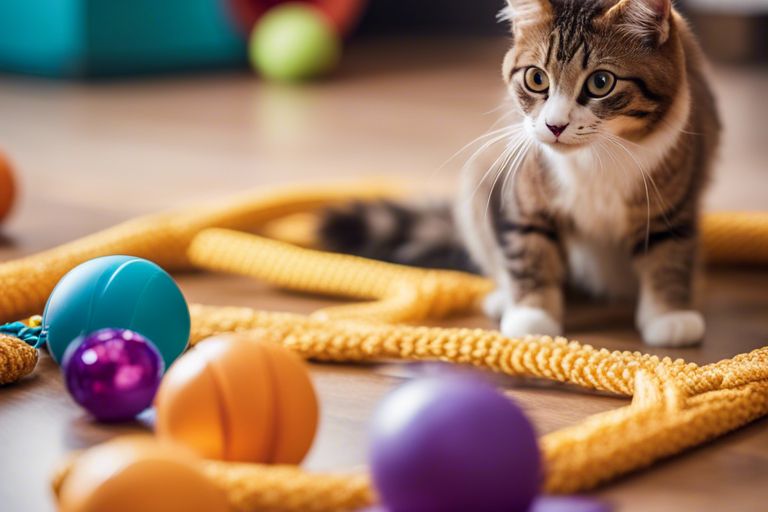Boredom can significantly affect your bird’s mental and physical well-being, leading to stress and unwanted behaviors. As a responsible bird owner, it’s necessary to provide engaging activities and stimulating environments to keep your feathered friend happy. In this guide, you will learn simple yet effective strategies to enrich your bird’s life, ensuring they remain active and thriving. From toys and social interaction to varied diets, discover how you can transform your pet’s daily routine and prevent the adverse effects of boredom.


Understanding Bird Boredom
To properly address your bird’s needs, it is crucial to understand what boredom looks like in avian companions. Birds are incredibly intelligent and social creatures, and when they lack engagement and stimulation, they can exhibit signs of boredom. Acknowledging these signs can help you intervene before boredom leads to more serious behavioral issues.
Signs of Boredom in Birds
Little changes in your bird’s behavior may be the first indicators of boredom. You might notice your feathered friend becoming increasingly quiet or less interactive. Perhaps your bird has begun to pluck its feathers or engage in excessive vocalizations—these can be cries for help or signals that they’re feeling unchallenged. Other signs can include pacing, repetitive behaviors, or shifts in eating habits.
If your bird is frequently squawking without purpose or seems apathetic rather than social, these are signals that they need more engagement in their daily routine. Attending to your bird’s emotional well-being is important to maintaining their happiness and overall health.
Factors Contributing to Boredom
Birds, like any other pet, require consistent mental and physical stimulation to thrive. Factors contributing to boredom can stem from various aspects of their environment and care. It is crucial to consider the variety of activities and social interaction you provide for your avian friend.
- Limited environmental enrichment
- Lack of social interaction
- Static or repetitive daily routines
- Insufficient foraging opportunities
- Inadequate toys or playthings
This list highlights some of the primary areas that can lead to boredom in your bird, underscoring the importance of a dynamic environment that caters to their psychological and physical needs.
Birds thrive in environments that challenge their intelligence and encourage exploration. Assess the factors in their habitat, such as the types of toys you provide, the availability of climbing spaces, and interactive playtime with you, the owner. When considering their needs, remember that both social interaction and a variety of activities are critical to keeping them engaged and happy.
- Providing a mix of toys and activities
- Integrating schedules for playtime
- Offering new experiences regularly
- Encouraging foraging to keep their minds active
- Creating a dynamic space for your bird to explore
This comprehensive approach will not only mitigate boredom but also enhance the bond between you and your beloved feathered companion.

How to Engage Your Bird
Assuming you’re keen on keeping your feathered friend entertained, there are various strategies you can implement to ensure your bird doesn’t fall into a boredom rut. Engaging your bird effectively involves understanding their needs and preferences, and then providing opportunities that stimulate both their mind and body.
Providing Interactive Toys
Even the most independent birds can benefit from interactive toys. These toys are designed to challenge your bird’s problem-solving skills and offer a sense of accomplishment once they figure them out. Look for toys that require your bird to manipulate parts or engage in activities like pulling, pushing, or shredding. Many options are available, such as puzzle feeders, which dispense treats when solved, or toys with hidden compartments that require dexterity to access.
Make sure you rotate the toys regularly to maintain interest and prevent boredom. Observe your bird’s preferences and try different types of toys to discover which ones they enjoy the most. Having a variety of interactive options will not only keep them entertained but also promote mental stimulation, necessary for their overall health.
Introducing New Experiences
There’s more to engaging your bird than just toys; introducing new experiences can also be incredibly beneficial. Change is necessary for your bird’s mental health, so consider introducing them to different environments, sounds, and other pets, if applicable. For instance, allowing your bird to explore a new room in your home or spending time outdoors (safely harnessed, of course) can provide new sensory stimuli.
Your bird might also enjoy different forms of enrichment, such as new perches, interesting textures, or even gentle music. Incorporate items like branches from safe trees (like apple or willow) or mirrors that encourage social interaction. Be mindful of, the goal is to keep them stimulated and encourage exploration.
Socializing with Your Bird
Toys are useful, but social interaction is equally important. Birds are social creatures by nature and thrive on the connection they have with their human companions. Spend quality time with your bird, talking, singing, or simply sitting nearby. Regular interaction can foster a strong bond between you and your feathered friend, reducing feelings of loneliness.
Providing opportunities for socialization with other friendly pets or visitors can also enrich your bird’s experience. Allow your bird to engage in supervised interaction with other birds, ensuring they feel secure and safe throughout. This variety of social experiences not only helps with boredom but can also teach them new social behaviors.
Tips for Daily Enrichment
After recognizing that your bird may be experiencing boredom, it’s crucial to introduce daily enrichment activities. This will help improve your pet’s quality of life and overall well-being. Here are some effective tips you can implement daily to keep your feathered friend engaged:
- Establishing a Routine for playtime and interaction.
- Incorporating Variety in Diet to stimulate your bird’s palate.
- Changing the Environment to inspire curiosity and exploration.
Establishing a Routine
Daily routines are crucial in providing a sense of stability for your bird. By setting aside specific times for activities like play, socialization, and training, your bird will learn to anticipate and look forward to these moments. This can reduce anxiety and encourage bonding between you and your pet.
Consistently engaging your bird with these routines can promote not only physical health, but also emotional well-being. Such stability helps your feathered companion understand what normalcy looks like, fostering a more relaxed atmosphere.
Incorporating Variety in Diet
There’s nothing more monotonous for a bird than eating the same food every day. To combat this, incorporate a variety of fresh fruits, vegetables, and compatible grains into your bird’s diet. This not only welcomes a burst of flavor but also ensures they receive crucial nutrients. Rotate their meals frequently to maintain their interest and encourage exploration of new tastes.
By providing a multicolored array of options, you stimulate your bird’s natural foraging instincts, which can further alleviate boredom and promote mental activity.
Understanding your bird’s nutritional needs is also crucial. Ensure that you research which foods are safe and beneficial for your specific species. Avoid any items that are toxic, such as avocado, chocolate, or caffeine, and opt for organic selections whenever possible. A healthy diet is key to an engaged and happy pet.
Changing the Environment
Clearly, your bird’s living space can become stale if left unchanged for too long. Regularly rearranging their cages or providing new toys can spark curiosity and joy. Consider shifting the arrangement or introducing interactive elements like climbing structures or swings to keep your bird entertained. You can also include natural elements such as branches or plants that are safe for birds.
Environment diversity is pivotal; it not only keeps their surroundings fresh but also encourages physical activity as they explore their space.
For instance, you might create a more stimulating environment by setting up a play gym outside of the cage during certain times of the day. This can provide them with the new scenery and activities they crave, activating their natural instincts for foraging and climbing.
Assume that by implementing these tips, you will not only reduce boredom but also significantly enhance your bird’s happiness and health.
Summing Up
Drawing together the various strategies to engage your bird can greatly enhance its quality of life. Do not forget, your bird thrives not just on physical care but also on mental stimulation. By incorporating toys, interactive playtime, and routine changes into your bird’s daily life, you can significantly reduce boredom and promote happiness. Make it a habit to rotate its toys regularly and introduce new activities to keep things fresh and exciting. Engaging your bird with puzzles and foraging opportunities can also stimulate its natural instincts while providing the mental exercise it craves.
Additionally, social interaction is crucial for your bird’s well-being. Spending quality time with your feathered friend and allowing for opportunities to interact with other birds, if possible, can prevent feelings of loneliness and boredom. Consider setting aside dedicated playtime each day and allowing your bird to explore safe spaces. By taking these steps, you can create a fulfilling environment that not only addresses boredom but also strengthens your bond with your feathered companion. Your investment in time, patience, and creativity will undoubtedly lead to a happier, healthier bird.
FAQ
Q: Why is it important to help my bird cope with boredom?
A: Birds are highly intelligent and social creatures that require mental and physical stimulation to thrive. Boredom can lead to various behavioral issues such as feather plucking, excessive screaming, or even depression. By providing a stimulating environment and engaging activities, you can help your bird maintain its mental well-being, reduce stress, and foster a more energetic and happy demeanor.
Q: What types of toys are best for keeping my bird entertained?
A: The best toys for birds are those that promote exploration, problem-solving, and physical activity. Look for a variety of toys made from safe materials like natural wood, rope, or cardboard. Some options include shreddable toys, puzzle toys that dispense treats, swinging toys, and foraging toys that encourage birds to search for food. Rotate toys regularly to keep your bird engaged and to prevent monotony.
Q: How can I provide social interaction to help my bird cope with boredom?
A: Birds are social animals and thrive on interaction. Spend quality time with your bird by engaging in activities such as talking, singing, or playing together. Encourage social play by inviting family members or other pets to interact under supervision (if appropriate). Additionally, consider setting up playdates with other birds if your bird is socialized properly. This interaction is crucial for your bird’s mental stimulation and overall happiness.










